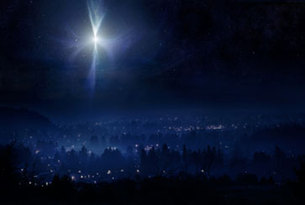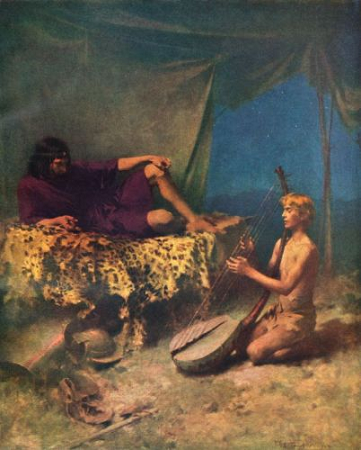
One Saint continues with selected quotations from Ernest L Martin's work, The Star of Bethlehem: The Star that Astonished the World.
It is recommended you access this fascinating work at the ASK ELM website. You can read or listen to the entire book online for free.
You can also listen to David Sielaff’s wonderful audio interview with George Ann Hughes at the Byte Show. These files bring us up to date, for David Sielaff continues the work of Ernest L Martin today. You will find the full interview at The Byte Show. Scroll way down to The Star of Bethlehem series, in fourteen parts.
Also available are all eleven parts of The Star of Bethlehem interviews Ernest L Martin did with Jeff Rense at ASK ELM.
Was the Star a Real Star? (Chapter Three)
"The language that Matthew employed to describe the Star of the Magi strongly suggests that it was an ordinary star or planet. After all, the Magi themselves were astrologers and interested in the motions of the heavenly bodies. Since most people profoundly respected the practice of astrology in the time of Augustus and Herod, it has convinced many scholars that the Magi were observing a real star. This is surely what the New Testament is stating.
"Probably no other star in history has been sought after more than the Star of the Magi. What star could this have been?
"This period of 3 to 1 B.C.E. for the dating of Jesus’ birth for the early Christian historians...should not be jettisoned from our thinking. It is unfair and nonprofessional to dismiss as unworthy of consideration the vast number of these early Christian scholars who testified that Jesus was born in the period we recognize as 3 to 1 B.C.E. Properly, modern scholars are now beginning to recognize that the early Christian scholars had far more ancient records to consult than we do today.
"Let us be plain about the early historical records which concern the time of Jesus’ birth. There is not a single Christian scholar (who was able to do research at the above libraries) who has stated that 7, 6 or even 5 B.C.E. was the time for Jesus’ birth. Every one of them is at odds with modern historical opinion on this particular subject. Most of the early scholars focused on the year from 3 to 2 B.C.E. and Dionysius Exiguus in the 6th century finally accepted a late 1 B.C.E. for Jesus’ birth.
"It is truly a disservice of the highest rank that no serious attention is being given to the historical beliefs of these early Christian scholars. Their historical evaluations given when Rome and the empire had functioning libraries (during the period of Pax Romana) have been dismissed out of hand and without the slightest consideration by many modern scholars. This is not only unfair, it is absurd. Forgive me for being blunt, but it is time to demand reversal of this situation. It is not that I want my opinion to prevail at the expense of all other historical evaluations, but it is only reasonable that all ancient authorities be given a fair hearing in this important chronological and historical matter.
"The Magi were basing their decisions to go to Jerusalem on the motions of the heavenly bodies. After all, that was their primary occupation. They were professional observers and interpreters of heavenly signs involving the Sun, Moon, planets and stars. This procedure is thoroughly harmonious with the teachings of the Bible about such things. In the first chapter of Genesis it says that the stellar bodies were designed to provide “signs” to those on earth. 10 For the Magi to have seen a “star” or a “planet” rise above the eastern horizon in some significant relationship to other stellar bodies would have been thoroughly in accord with the statement in Genesis 1:14. The Jewish authorities, and even King Herod, would not have found such interpretations by the Magi as being odd or anti-biblical.
"In the practical way that Matthew described the whole affair concerning the Magi, it is evident that these Magian priests observed a normal heavenly body ascend above the eastern horizon. It may have been seen in some kind of unusual configuration or relationship with other celestial bodies within the two-year period before they visited Herod. We now know that an 18-month period within the years 3 and 2 B.C.E. was an extraordinary one for visible astronomical occurrences. Nothing like it had happened for centuries. Since this is the very period when most early Christian scholars said Jesus was born and also the time remarkably in agreement with New Testament chronological indications, it would be prudent to focus our attention on this period. Some major points of significance will be in store for us when we do."
___________
Martin, Ernest L. “The Star of Bethlehem: The Star that Astonished the World.” 12 DEC 2012. <http://www.askelm.com/star/star003.htm>
You can purchase the hardbound version of The Star of Bethlehem: The Star that Astonished the World, by DR Ernest L Martin at amazon.com.

 RSS Feed
RSS Feed